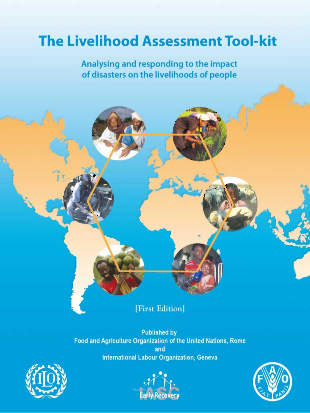
Assessing the impact of disasters on the livelihoods of people and the capacity and opportunities for recovery and increased resilience to future events is an important part of the response to disasters, yet current assessment systems are often weak, uncoordinated and are not strongly linked to livelihood recovery interventions. In order to improve understanding of the impact of disasters on livelihoods, the Food and Agriculture Organization of the United Nations (FAO) and the International Labour Organization (ILO) have jointly developed the Livelihood Assessment Tool-kit (LAT). The LAT consists of three main technical elements: Livelihood Baseline Assessment (which is undertaken pre-disaster); Immediate Livelihood Impact Appraisal (undertaken immediately after the disaster); and Detailed Livelihood Assessment (undertaken up to 90 days after the disaster).
In the process of development, the LAT has been tested, redefined and refined in a number of countries including Pakistan (2005 Kashmir earthquake); Indonesia (2006 volcanic eruption and earthquake in Yogjakarta); Philippines (2006 Typhoon Reming); Bolivia (2007 flooding); and Pakistan again in 2008 (livelihood baseline work). This process of continual learning and improvement continues, and so the current set of guidelines contained in these volumes should be seen as one stage in the development of the approach.
Resource collections
- Evaluating humanitarian action
- UN Habitat - Urban Response Collection
- Urban Response - Urban Crisis Preparedness and Risk Reduction
- Urban Response Collection - Community Engagement and Social Cohesion
- Urban Response Collection - Economic Recovery
- Urban Response Collection - Environment and Climate Change
- Urban Response Collection - Housing, Land and Property
- Urban Response Collection - Urban Crisis Response, Recovery and Reconstruction
- Urban Response Collection - Urban Resilience